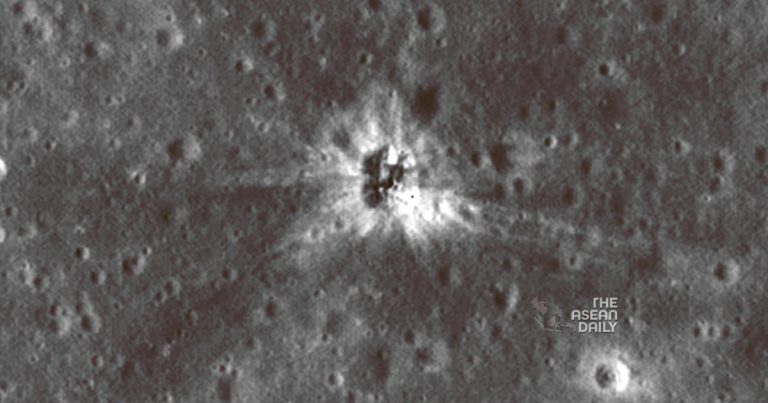20-8-2023 (MOSCOW) Russia’s Luna-25 spacecraft, a significant lunar mission aiming to explore the Moon’s south pole, has suffered a devastating setback as it crashed into the lunar surface due to a loss of control, according to officials. This mission marked Russia’s return to lunar exploration after an absence of nearly 50 years.
The unmanned spacecraft was poised to make history as the first-ever attempt to land on the Moon’s southern pole. However, it encountered difficulties as it transitioned into its pre-landing orbit, ultimately leading to its tragic failure.
Scientists had high hopes for this mission, as the Moon’s south pole is believed to potentially contain frozen water and valuable resources. It was an ambitious endeavor by Roscosmos, Russia’s state space corporation.
Roscosmos announced on Sunday morning that it had lost communication with the Luna-25 shortly after 14:57 pm (11:57 GMT) on Saturday. In an official statement, Roscosmos revealed that the spacecraft had deviated into an unpredictable orbit and, as a result, had collided with the lunar surface. A special investigative commission will be established to determine the reasons behind the mission’s failure.
The loss of the Luna-25 is a significant setback for Roscosmos and the Russian space program. Over the years, Russia’s civilian space program has faced challenges and budget constraints as a substantial portion of state funding has been redirected towards military initiatives.
Russia had been in a race with India to land a spacecraft on the Moon’s south pole. India’s Chandrayaan-3 mission is scheduled to attempt a landing there in the coming week. Once Chandrayaan-3 successfully lands, a six-wheeled rover will emerge to explore the lunar surface, collecting critical data and images to transmit back to Earth for analysis.
The Luna-25 spacecraft was launched from the Vostochny Cosmodrome in Russia’s far eastern Amur region on August 11th. It had been anticipated to achieve a historic soft landing on the Moon, just days before India’s planned touchdown.
This mission was Russia’s first lunar venture since 1976 when it was part of the Soviet Union. At that time, the Luna-24 mission successfully landed on the Moon’s surface. The Moon’s south pole is of particular interest to scientists due to its large shaded areas, making it a prime location for the possible discovery of water, an invaluable resource for future lunar exploration.




